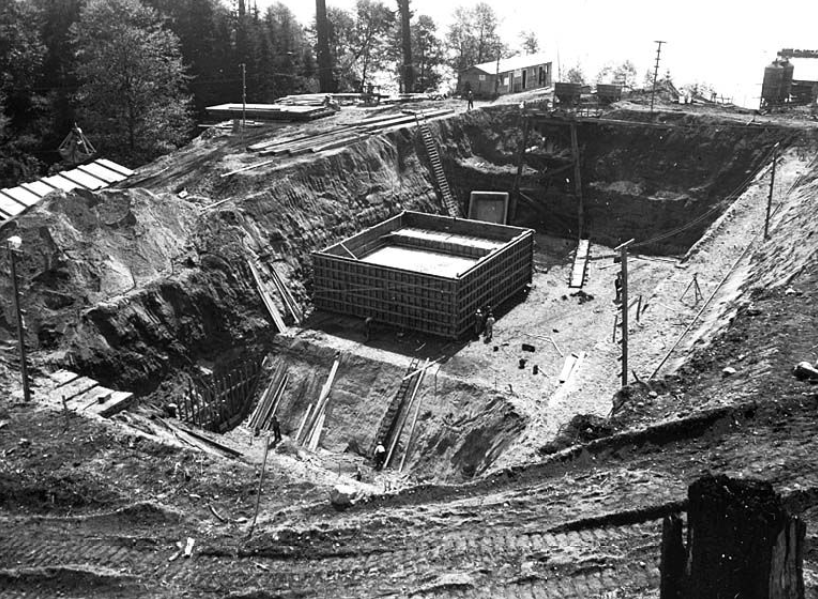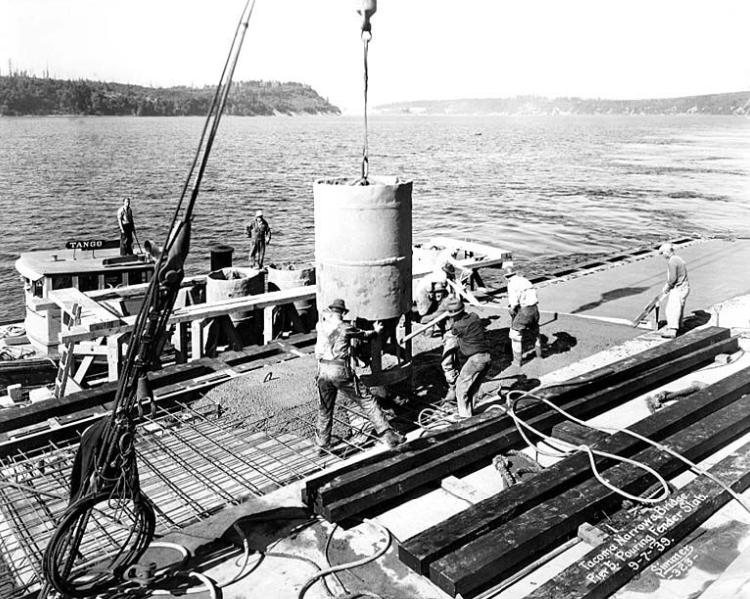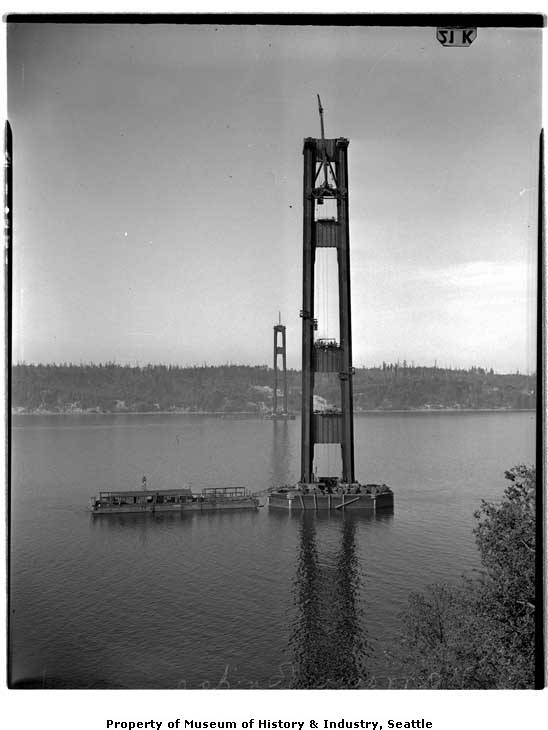In 1937, money became available. Engineers started designing the bridge. Clark Elderidge (Project Engineer) immediately began on the blueprint. The original design called for an $11 million span; too expensive for their small budget. The Public Works Administration (PWA) called Leon Mossieff to design a cheaper bridge. Mossieff's design was much less; $7 million, but it sacrificed safety. The design had a ratio of 1:72 (width to length of center span). This was incredibly thin, since the narrowest bridge was 1:42 (Golden Gate Bridge). The design was turned down by engineers (David Glenn, Dexter Smith, and Theodore Condron) proclaiming it unstable (Hobbs 55-57). The PWA ignored complaints and chose cheapness, rather than safety.
The Collapse of Galloping Gertie:
A Revolutionary Turning Point in Suspension Bridge Design
Creation of the Bridge
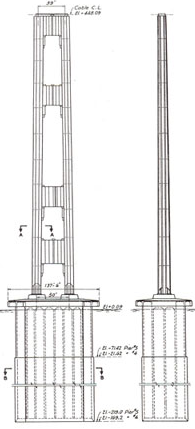
"Tower face and side view, drawing", 1939 WSDOT
In the fall of 1938, construction for the bridge started. Multiple steps were involved, including the placement of towers, anchorages, and many more (Chronicling America).
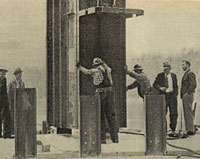
"Tower Steel is set on Base Plate",
University of Washington Libraries
During construction, the bridge would wobble. The workers chewed on lemons to resolve the motion sickness. It's rumored that the workers were the ones who nicknamed the bridge "Galloping Gertie"(Hobbs 60).
“It was an odd sensation, You’d be driving along and there’d be a car forty or fifty yards ahead of you, and it would disappear in the valley of the wave. And, then you’d come up on the crest and see the car again. It was a very weird sensation”
- Howard Clifford, Tacoma News Tribune reporter
